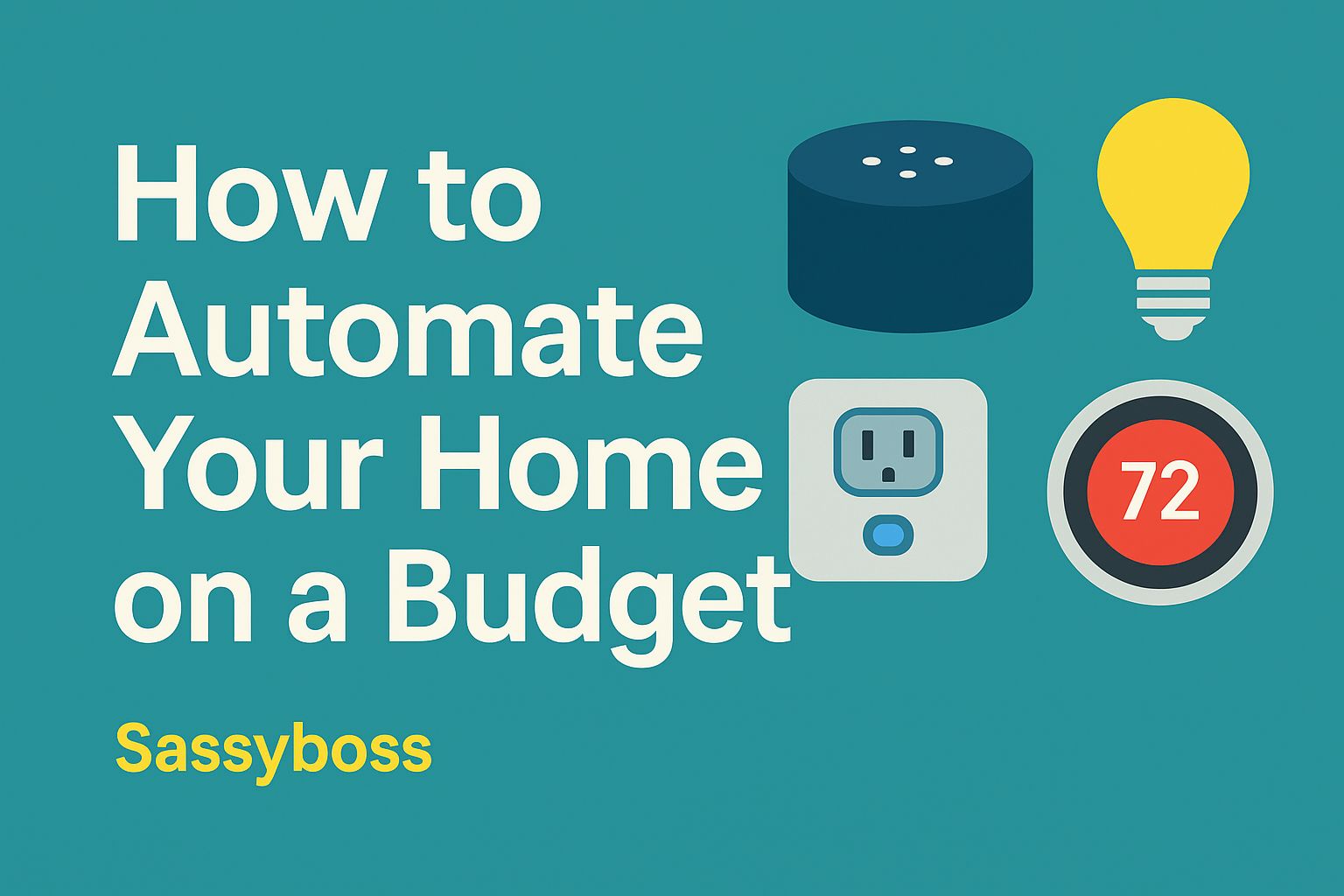How to Automate Your Home on a Budget
Home automation is no longer a luxury reserved for tech enthusiasts or the ultra-wealthy. With today’s affordable technology and DIY solutions, automating your home has become more accessible than ever. Whether you’re looking to boost convenience, improve energy efficiency, or increase security, you can enjoy the benefits of a smart home without breaking the bank.
In this blog post, we’ll walk you through how to automate your home on a budget, exploring low-cost gadgets, platforms, and practical tips that make smart living possible for everyone.
Why Consider Home Automation?
Before we dive into the how, let’s briefly explore the why. Here are a few compelling reasons to automate your home:
• Convenience: Control lights, temperature, and appliances from your smartphone or with your voice.
• Energy Efficiency: Reduce your utility bills with smart thermostats, lights, and plugs that turn off automatically.
• Security: Keep your home safe with smart cameras, doorbells, and sensors.
• Accessibility: Assist those with disabilities or limited mobility to manage household tasks with ease.
The good news is, you don’t need to spend thousands to enjoy these perks.
Start with a Smart Assistant
The heart of most home automation systems is a smart assistant. These devices act as the brain of your smart home, allowing you to control various gadgets with simple voice commands or through an app.
Budget Options:
• Amazon Echo Dot – Around $30-$50
• Google Nest Mini – Around $30-$50
These affordable smart speakers come with Alexa or Google Assistant and are compatible with a wide range of smart home devices. Once you set up your assistant, you can begin integrating other gadgets.
Affordable Smart Lighting
One of the easiest and most impactful upgrades you can make is switching to smart lighting. With smart bulbs, you can turn lights on/off, change their color, and set schedules.
Budget Picks:
• Wyze Bulbs – Around $10 each
• TP-Link Kasa Smart Bulbs – Around $15 each
No need for expensive hubs—most budget smart bulbs connect via Wi-Fi. You can group them by room, set scenes like “Movie Night” or “Dinner Time,” and control them with your voice or phone.
Money-Saving Tip:
Instead of replacing every bulb in your house, start with the most-used lights like those in the living room, kitchen, or bedroom. You can expand gradually over time.
Smart Plugs for Appliance Control
Want to control appliances like coffee makers, lamps, or fans with your voice or on a schedule? Enter the smart plug. These little devices plug into a regular outlet and make any appliance smarter.
Recommended Models:
• Amazon Smart Plug – Around $25
• Kasa Smart Plug Mini – 2-pack for about $20
Smart plugs let you turn things on/off remotely and set timers. They’re especially handy for energy savings—no more leaving devices on all day.
Budget Smart Security Solutions
Security is often a top reason homeowners turn to automation. Thankfully, you don’t need a pricey system with monthly fees.
Key Products:
• Wyze Cam v3 – Around $35: Indoor/outdoor use, motion detection, night vision.
• Blink Mini – Around $30: Simple, compact indoor camera with Alexa support.
• Ring Video Doorbell Wired – Around $60: See who’s at your door via your phone.
These tools offer peace of mind and real-time monitoring without the steep cost. Most include cloud storage options, and some offer local storage for free.
Thermostats That Save You Money
Heating and cooling can be your biggest utility expense. A smart thermostat can learn your schedule and preferences to save energy and money.
Affordable Options:
• Google Nest Thermostat (2020 version) – Around $130
• Wyze Thermostat – Around $70
Look for deals and rebates—many utility companies offer discounts for installing energy-efficient thermostats, which can bring the price even lower.
Automate on a Schedule
One of the best things about home automation is that you can set routines to handle tasks automatically. For example:
• Turn on porch lights at sunset.
• Start the coffee pot every morning at 7 AM.
• Lower the thermostat when you leave for work.
Using the Alexa or Google Home app, you can create custom routines to simplify your day-to-day life—no coding required.
Don’t Forget Your Router
Reliable Wi-Fi is the backbone of any smart home. If your internet is spotty, even the best devices will struggle to work properly. While it might not sound exciting, consider investing in a budget mesh Wi-Fi system if your current router can’t handle multiple devices.
Budget Mesh Options:
• TP-Link Deco M4 – Around $100 for a 2-pack
• Google Nest Wi-Fi – Often available for under $150
A strong network ensures all your devices stay connected without lag.
DIY vs. Subscription Services
Many traditional home automation systems come with monthly fees and professional installation. But with DIY platforms like:
• SmartThings (Samsung)
• Home Assistant (open-source)
• Apple HomeKit (for iOS users)
You can build a personalized, fee-free setup that suits your budget. Some open-source platforms even allow for advanced automation if you’re a bit tech-savvy.
Tips to Keep Costs Low
• Buy in bundles: Starter kits often come with a discount when you buy bulbs, plugs, and hubs together.
• Watch for sales: Black Friday, Amazon Prime Day, and holiday sales are great times to buy smart devices at a discount.
• Use IFTTT (If This Then That): A free tool that connects different devices and apps to automate tasks in clever ways.
Final Thoughts
You don’t need to spend thousands to enjoy a modern, smart home. With a bit of planning and a few well-chosen devices, you can automate your home on a budget and start living more conveniently, efficiently, and securely.
Start small—maybe with a smart speaker and a few bulbs—then build your system one device at a time. With today’s technology, smart living is truly within reach for everyone.
Have you started automating your home? Share your favorite budget smart devices in the comments below!
